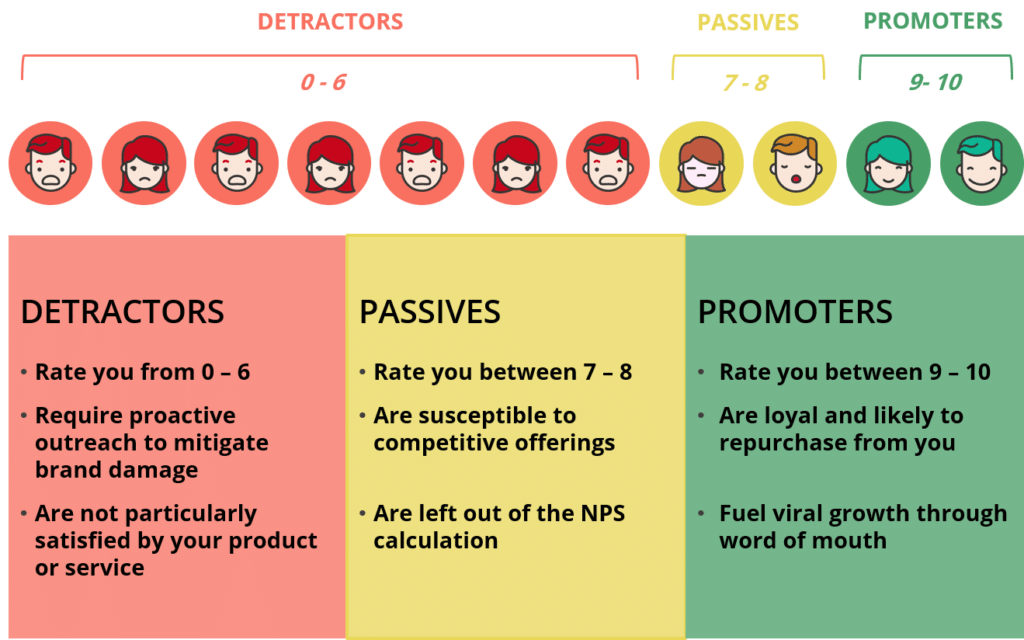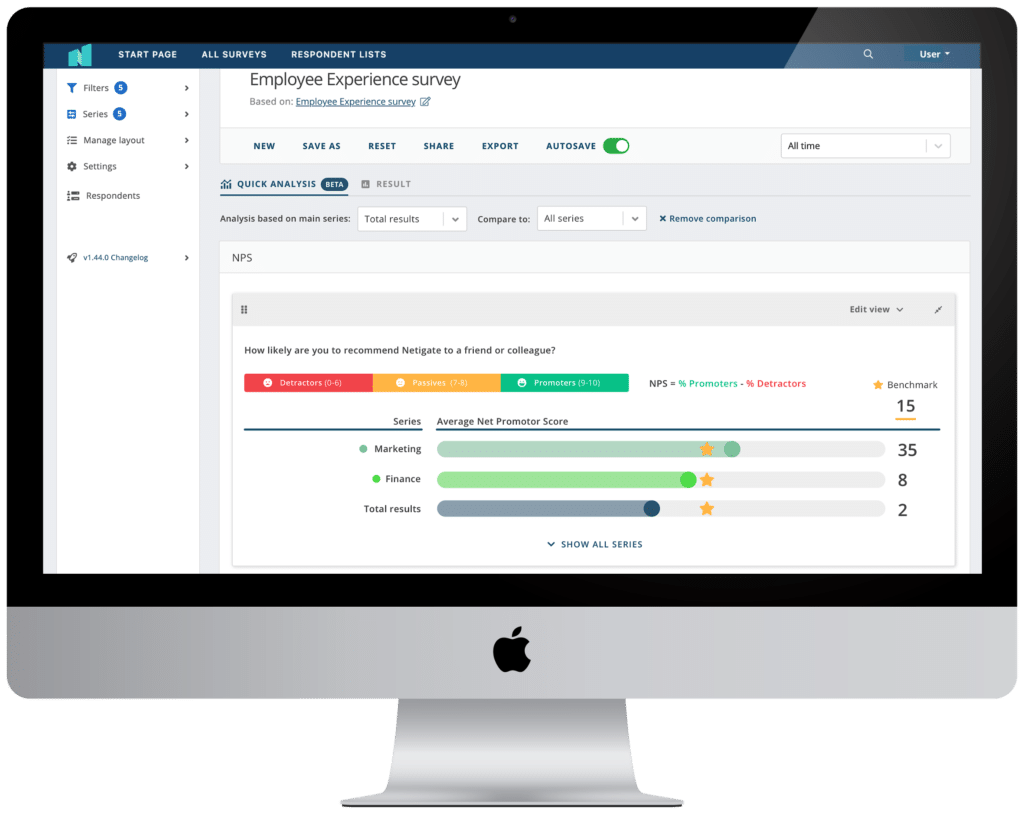Table of Contents
What is a good Net Promoter Score?
So you’re familiar with how Net Promoter Score (NPS) works, and you use it on a regular basis to evaluate customer satisfaction and willingness to recommend. Maybe you’ve even set some internal goals or benchmarks around improving your company’s NPS. That also likely means that at one point, you’ve probably asked yourself: “What is a good Net Promoter Score to have?”
The answer: aim for a score above +50, but a lot depends on quite a bit on the industry you’re in. A negative score should sound alarm bells.

A Net Promoter Score refresher
We’ll come back to the benchmarks for specific industries, but first, let’s review how NPS works. On the surface, a Net Promoter Score is relatively simple to understand.
A company sends a survey based on one question: “On a scale of 0-10, how likely is it that you would recommend us to a friend or colleague?”
Respondents are then classified into three categories: Promoters (scores 9-10), Passives (scores 7-8), and Detractors (scores 0 to 6). To calculate the company NPS, you subtract the percentage of detractors from the percentage of the promoters. Passives don’t factor into this equation.
Your takeaway Net Promoter Score is an index from -100 (every customer is a detractor) to 100 (every customer is a promoter). The trick comes when you’ve collected thousands of responses from your customers and now need to evaluate that data.

NPS Promoters, Passives, and Detractors
Promoters feel that a product or service has provided excellent value. They’re more likely to recommend your company via word-of-mouth (at no cost to your company’s marketing budget) and be a reliable source of recurring revenue. It’s also a reliable metric for predicting growth potential.
A detractor, on the other hand, is a major churn risk and can potentially spread damaging feedback (ex: negative Yelp or Google reviews).
Research shows that detractors have louder voices than promoters. And considering that 84 percent of online reviews are trusted by consumers, detractors are capable of inflicting serious damage on a company’s livelihood.
You can’t satisfy every customer. Nor can you convert every detractor into a promoter. Unsatisfied customers are going to exist, no matter how sterling a reputation your brand has, or the quality of your customer service department.
However, a low or even negative score isn’t inherently bad – it can help you identify growth opportunities within product, customer service, or other areas of the company. Compare a subpar NPS score with getting a blood test at 35 and discovering you have high cholesterol. Sounds scary, but there’s time to enact changes in diet and physical activity. Ignored, however, it can lead to serious problems.
What’s a good Net Promoter Score for your industry?
Statistically speaking, you want to have a positive score (more promoters than detractors). The higher above 0, the more customer-centric your company. A score around 30 is admirable. Fifty is excellent, and above 70 is exceptional. Perfect scores are like unicorns – they simply don’t exist.
While the NPS method can be applied equally across many industries, it’s important to benchmark yourself against similar companies. Don’t compare insurance to hotels, or higher education to banking.
For example, the personal product industry (such as diapers, makeup, personal grooming) tends to have on average a very high NPS. Same with companies that offer unique products (Netflix, Tesla, etc.)
Meanwhile industries that notoriously deal with customer complaints, like airlines or property management, often have a lower NPS.
How we use NPS at Netigate
NPS is one of the tools we use internally at Netigate. For example, each customer who calls into Netigate’s Customer Success department not only receives support for their issue, but they’ll be sent an NPS evaluation afterwards. That helps Customer Success improve their own processes and identify who are the top performers within the team. Each NPS survey also includes logic jumps to open-text forms in order to bring in more qualitative data.
Anika Neubert, who heads up Customer Success at Netigate, said Netigate customers often ask about how how to interpret and take action on their NPS results. Without context, it can be hard to know what steps to take based on the score output, particularly a negative one.
Her advice is to zero in on the specific feedback from detractors and identify specific areas of improvement.
“I would get worried anytime an (NPS) falls below 0,” Anika said. “The lower it gets, the more detractors you have. It’s important to focus on why they’re upset and see if it’s just a one-off issue or a sign of a bigger problem.”
Anika also recommends that companies look at trends in their NPS over time, rather than focusing on a single score. And don’t expect perfection or chase the mythical “100” NPS. Open up a dialogue with your detractors and see what you can do to improve as a company. Get to the root of their issue. By focusing and investing more in customer experience (CX), you’ll likely see a boost in NPS in the next go-round.
“I would aim for a score around 50. For a lot of industries that is a good target,” Anika said. “Anything above that is incredible.”
-
Netigate Marketing
-
Netigate Marketing
- 4 min read
- .






